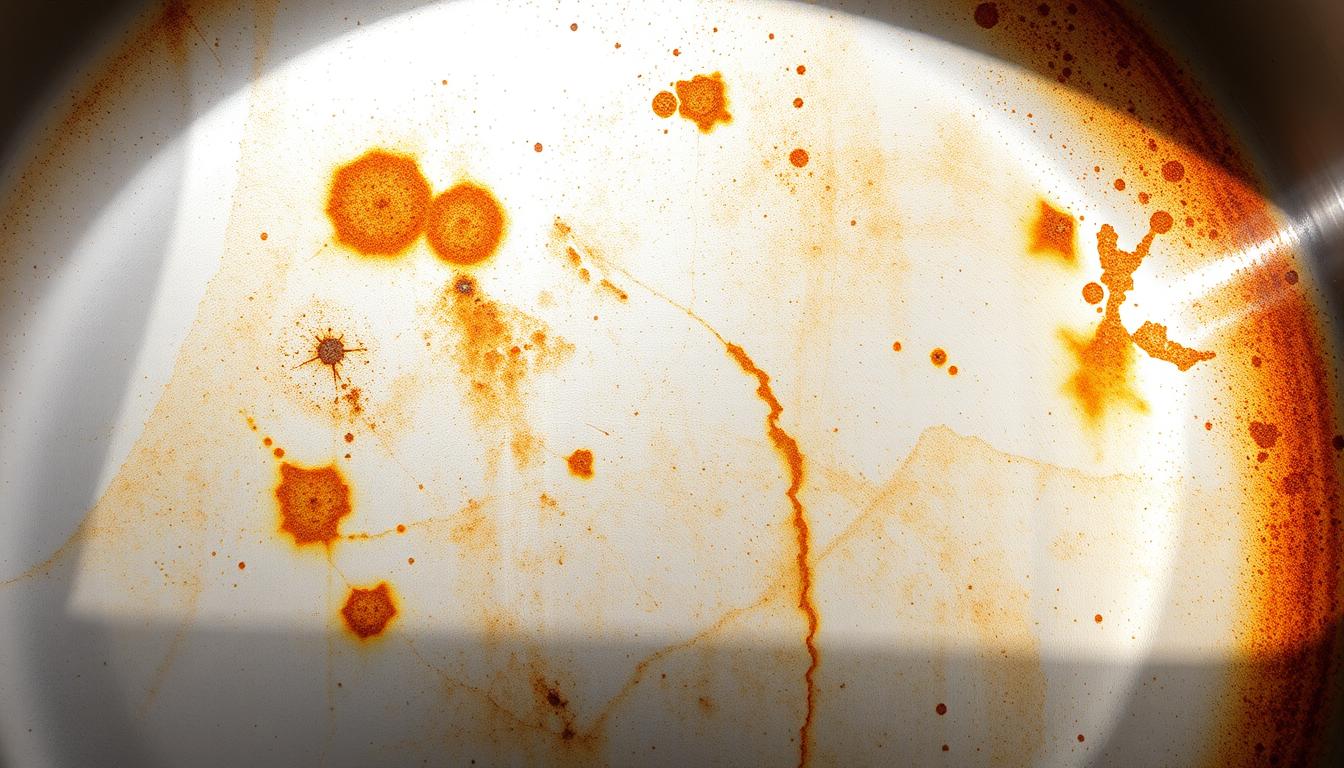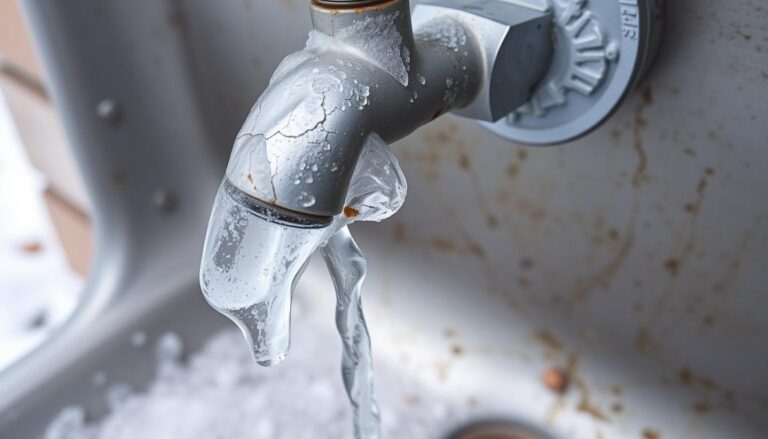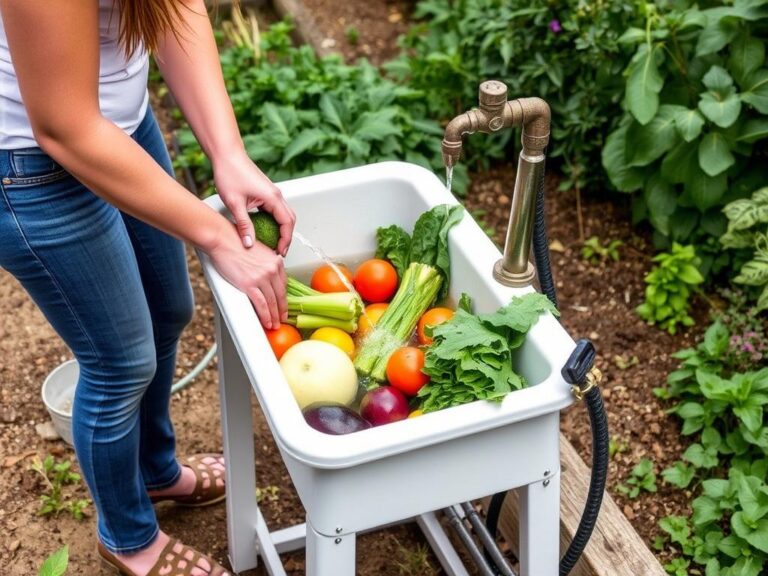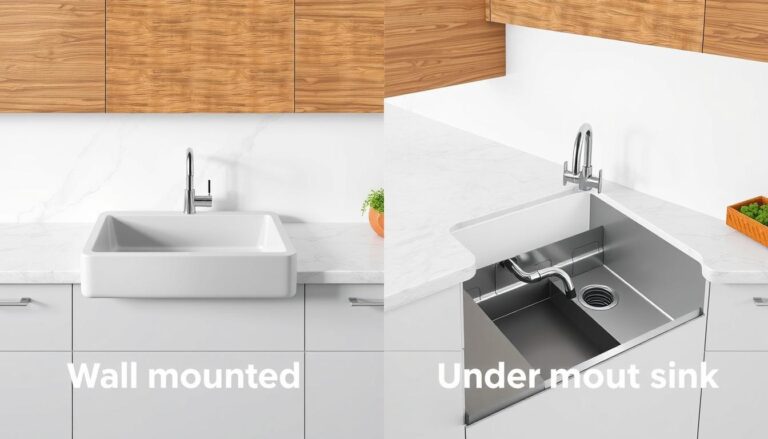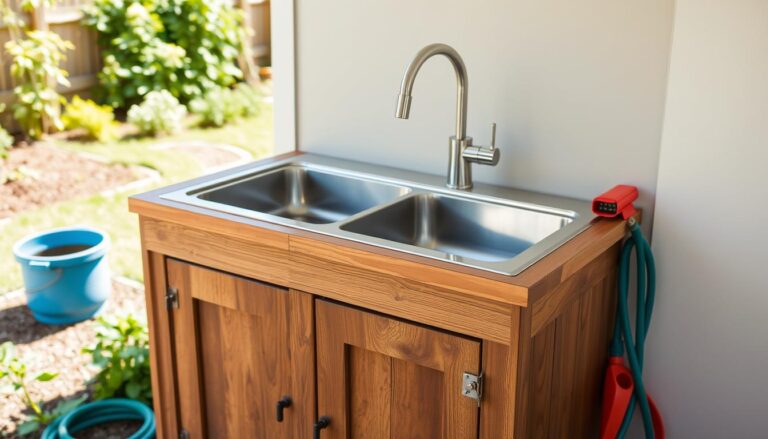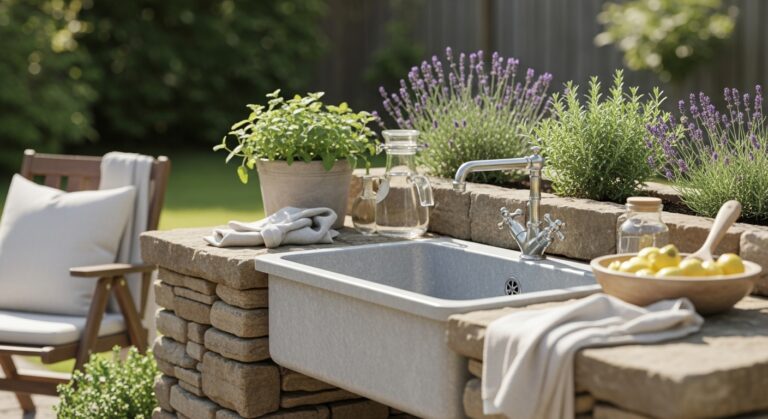How to Remove Rust from a Stainless Steel Sink: 4 Expert Tips & Home Remedies
Introduction
Even though stainless steel sinks are designed to resist corrosion, rust spots can still appear over time due to water minerals, cleaning chemicals, or metal utensils left in the sink. If you’ve noticed orange or brown stains tarnishing your sink’s shine, don’t worry — it’s fixable!
In this guide, we’ll show you how to remove rust from a stainless steel sink safely and effectively using expert cleaning methods and simple home remedies. Whether you prefer natural ingredients like baking soda and vinegar or want to use a commercial rust remover, these proven tips will help you restore your sink’s original sparkle — without damaging the surface. Keep reading to learn the best DIY rust removal techniques and maintenance secrets to keep your stainless steel sink looking brand new for years.
Why Does Stainless Steel Rust?
Stainless steel contains chromium, which forms a protective layer that prevents rust. However, this layer can be compromised when exposed to certain conditions. Most rust on stainless steel sinks isn’t actually from the sink itself but from other metal objects left in contact with the sink surface.
Common causes of rust on stainless steel sinks include:
- Cast-iron cookware left in the sink
- Metal cans or utensils sitting in standing water
- High iron content in your water supply
- Harsh cleaning chemicals are damaging the protective layer
- Steel wool or abrasive scrubbers leaving iron particles behind
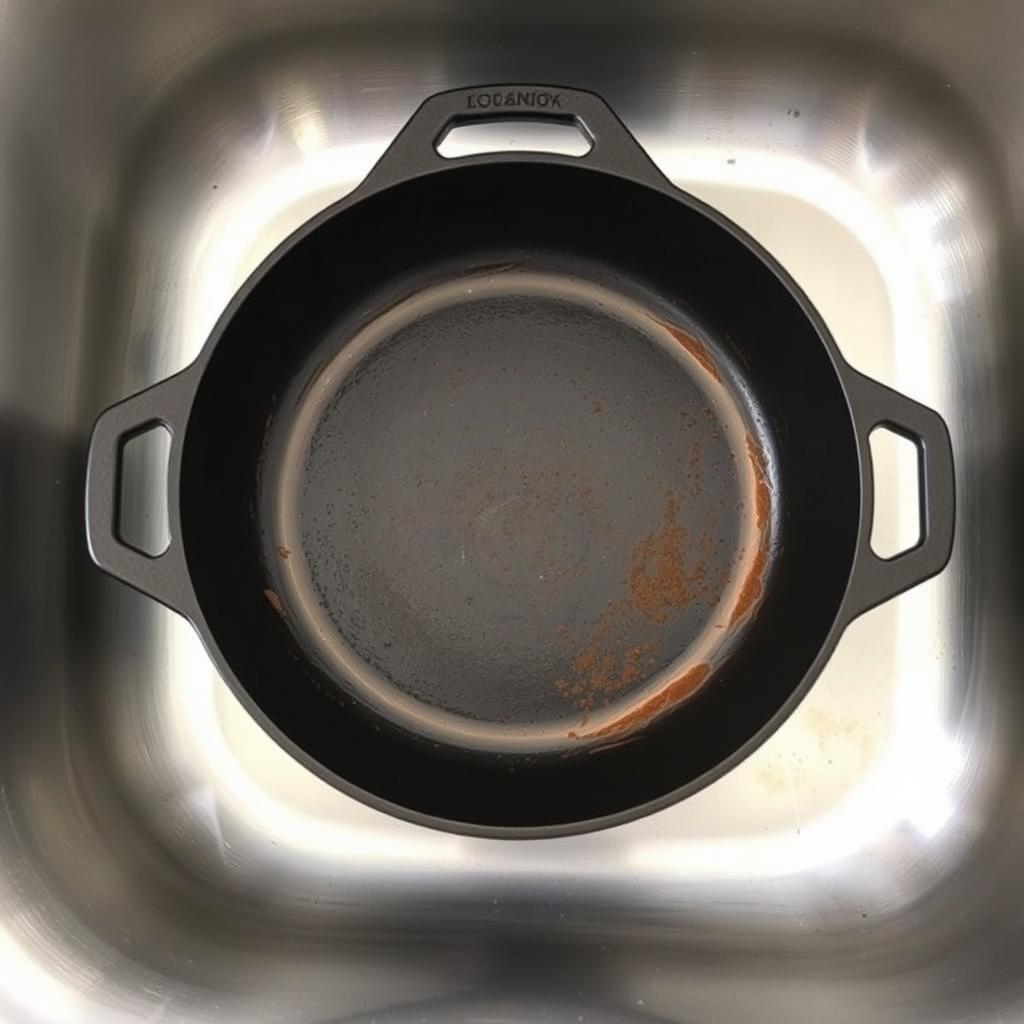
Tools & Materials Needed
Household Items
- Baking soda
- White vinegar
- Lemon juice
- Coarse salt
- Dish soap
- Microfiber cloths
- Non-abrasive sponge
- Old toothbrush (for crevices)
Commercial Products
- Bar Keepers Friend (contains oxalic acid)
- Stainless steel cleaner
- Rust remover specifically for metal surfaces
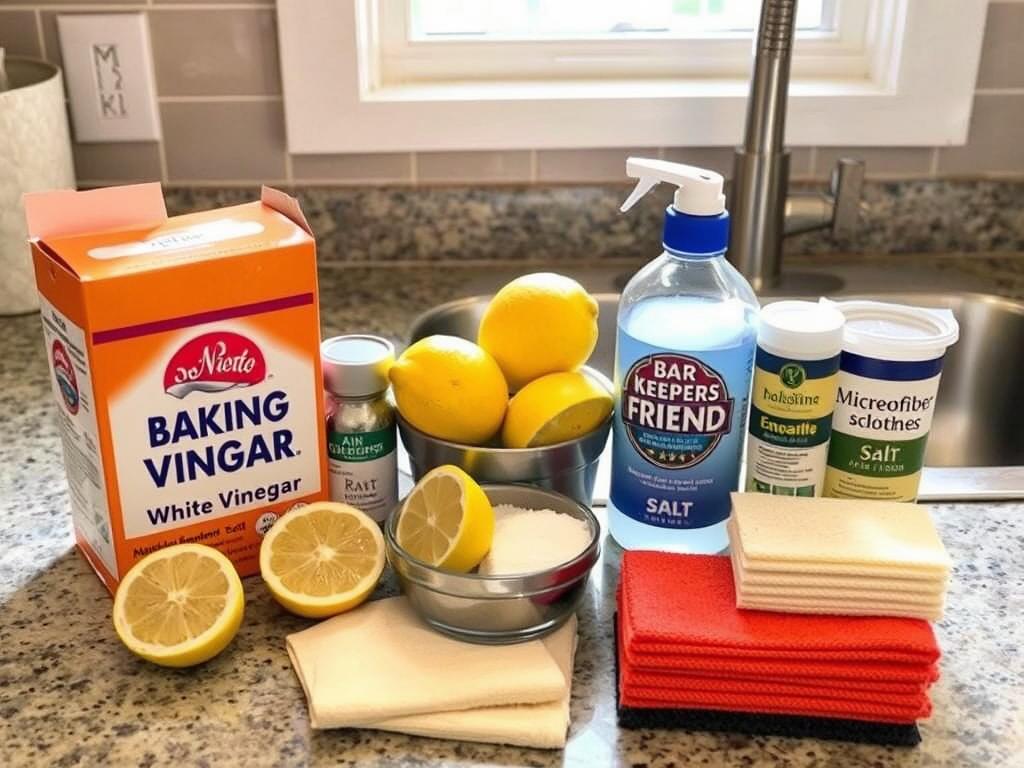
Preparation: Before You Start
Before applying any rust removal method, properly prepare your sink:
- Remove all items from the sink
- Rinse the sink thoroughly with warm water
- Apply a small amount of dish soap to a non-abrasive sponge
- Clean the entire sink surface to remove any food particles, grease, or debris
- Rinse again with clean water
- Identify all rust-affected areas
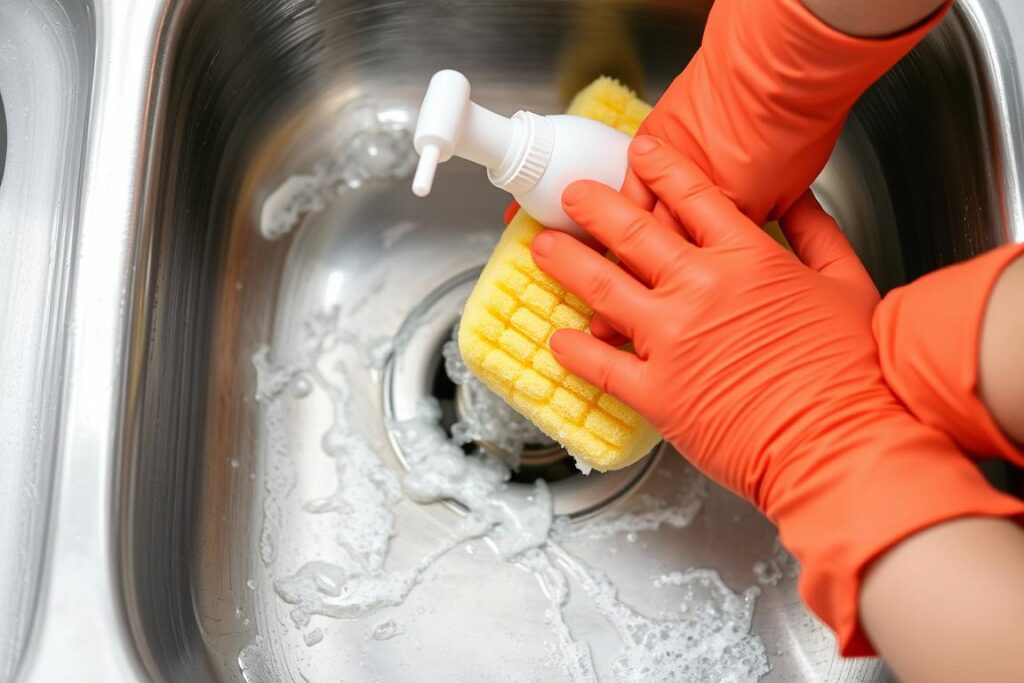
Pro Tip: Always scrub in the direction of the grain of your stainless steel to avoid scratching the surface. Look closely at your sink to identify the direction of fine lines running across the surface.
Method 1: Baking Soda Paste
Baking soda is mildly abrasive and can effectively remove rust without damaging stainless steel.
- Wet the rusted area with water
- Sprinkle a generous amount of baking soda directly on the rust spots
- Add a few drops of water to form a paste
- Gently rub the paste onto the rust using a soft cloth or non-abrasive sponge
- Scrub in the direction of the steel’s grain
- For stubborn spots, let the paste sit for 30 minutes
- Scrub again, applying moderate pressure
- Rinse thoroughly with clean water
- Dry completely with a microfiber cloth
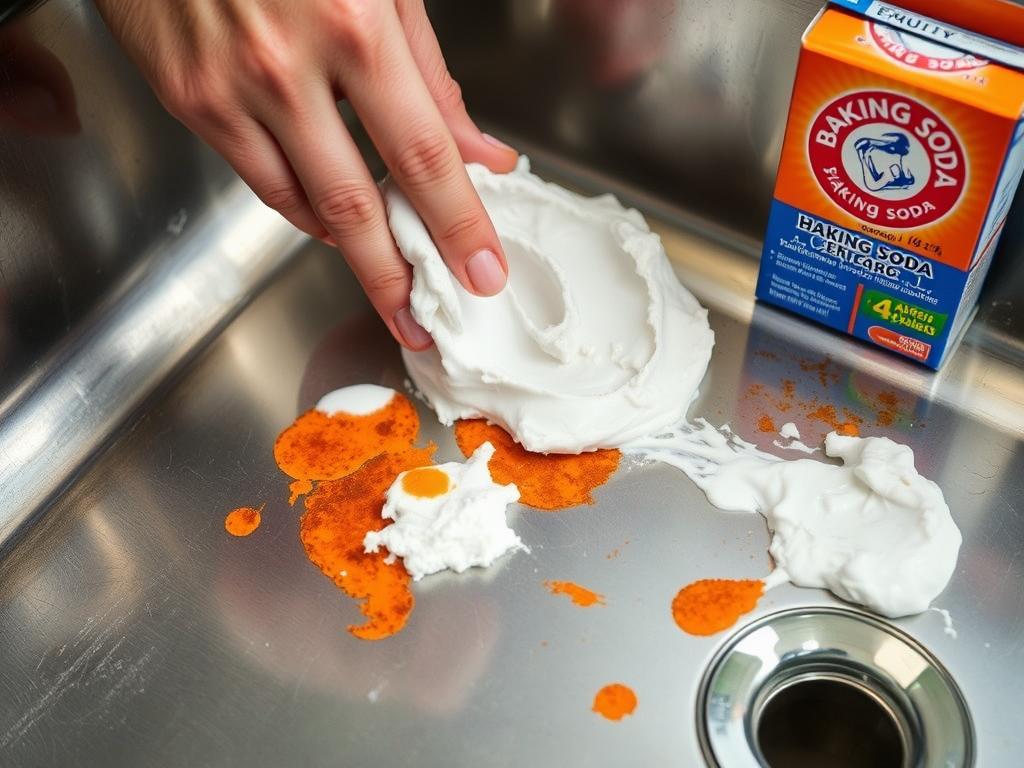
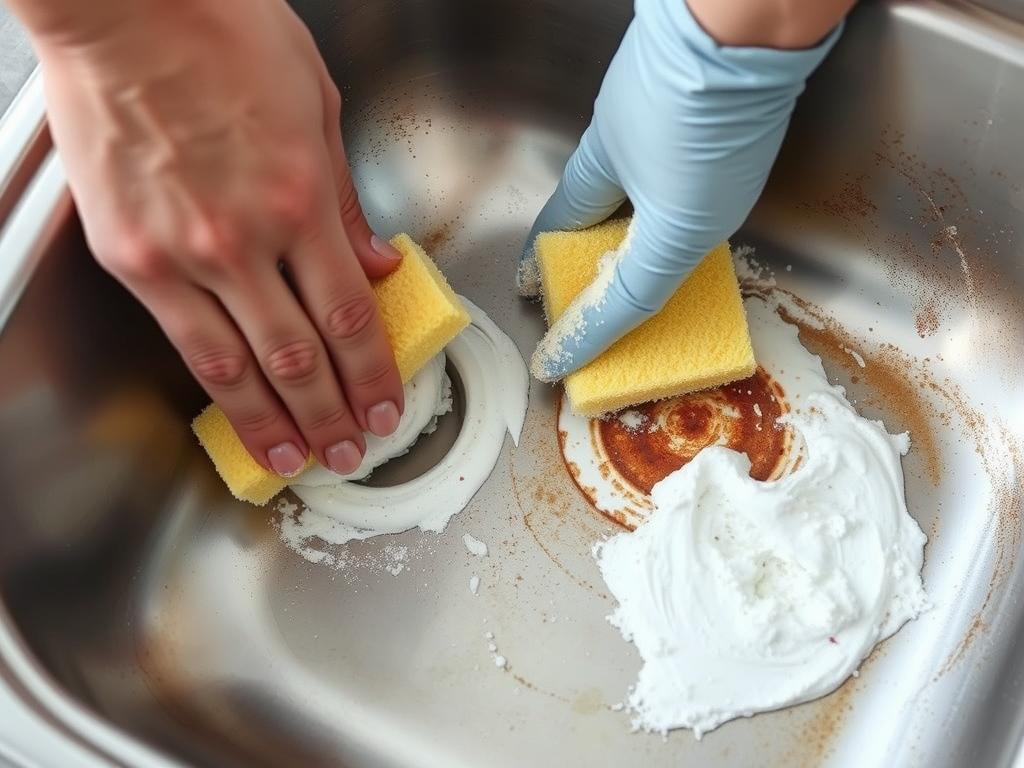
Method 2: White Vinegar Soak
The acetic acid in white vinegar dissolves rust effectively and is gentle enough for stainless steel.
- Pour white vinegar into a spray bottle
- Spray generously on the rusted areas
- For small spots, soak a paper towel in vinegar and place it directly on the rust
- Let the vinegar sit for 30 minutes to dissolve the rust
- Scrub gently with a soft sponge in the direction of the grain
- Rinse thoroughly with clean water
- Dry completely with a microfiber cloth
Warning: Don’t leave vinegar on stainless steel for more than 30 minutes, as prolonged exposure to acid can damage the finish.
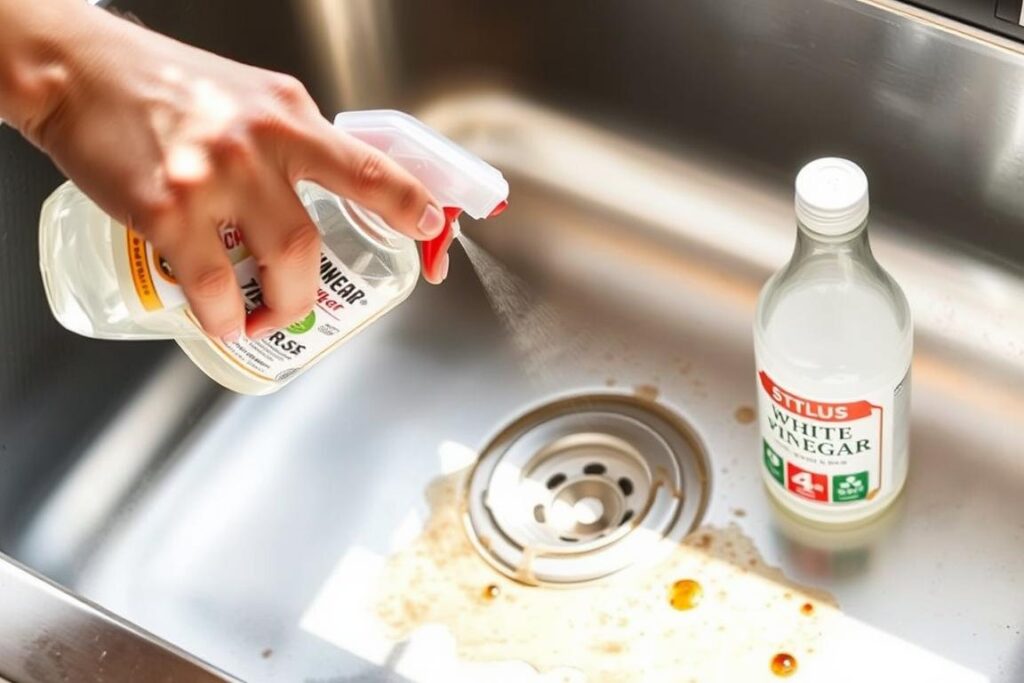
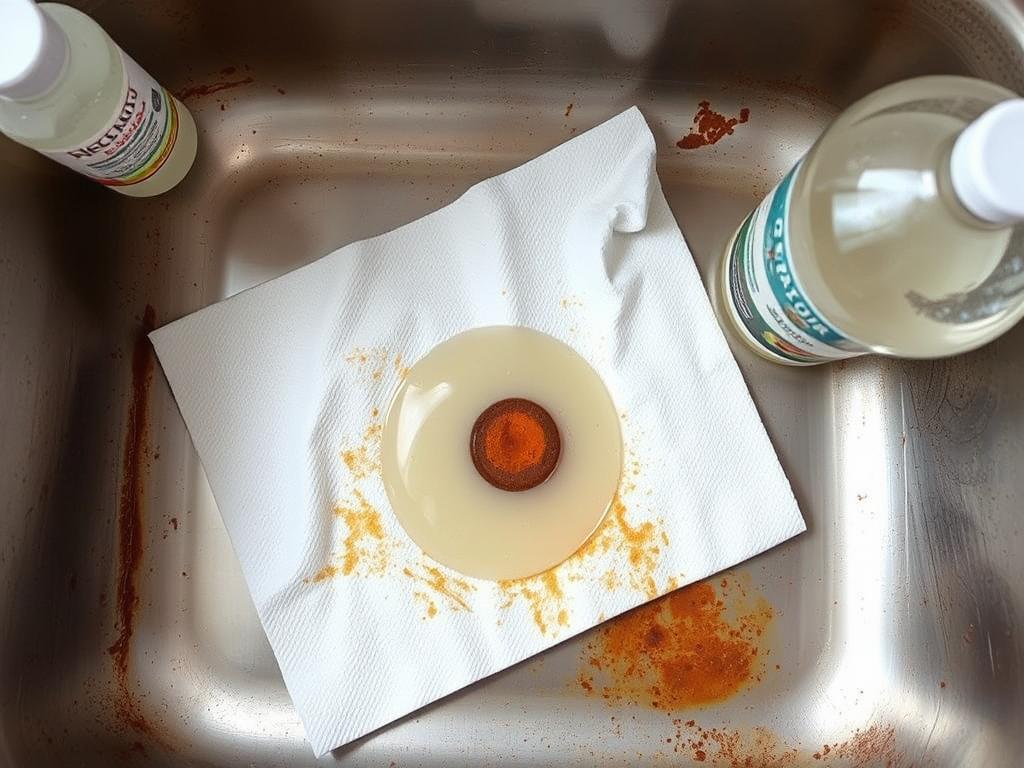
Method 3: Lemon and Salt Scrub
The citric acid in lemons, combined with the mild abrasiveness of salt, creates an effective natural rust remover.
- Cut a lemon in half
- Sprinkle coarse salt generously over the rusted areas
- Use the lemon half as a scrubber, squeezing gently to release juice
- Scrub the salted area with the lemon, following the grain
- Let the mixture sit for 5-10 minutes
- Scrub again with the lemon or a soft sponge
- Rinse thoroughly with clean water
- Dry completely with a microfiber cloth
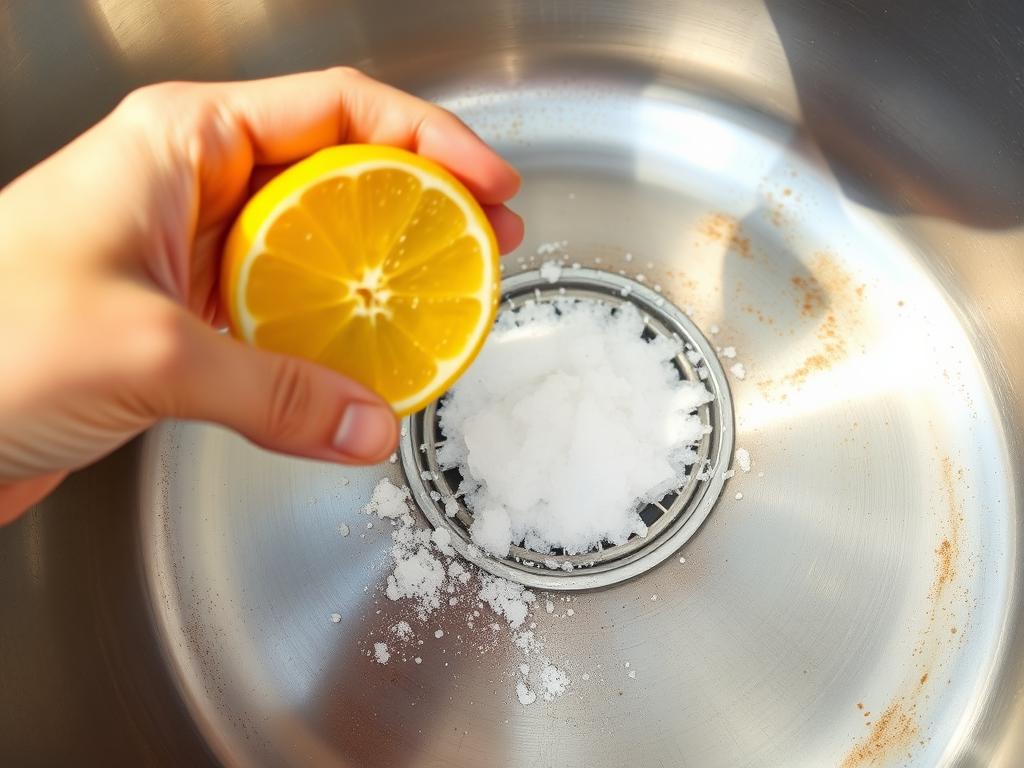
Pro Tip: For extra cleaning power, dip the cut lemon in baking soda before scrubbing the salted area.
Method 4: Commercial Rust Removers
For stubborn rust stains, commercial products like Bar Keepers Friend can provide more powerful results.
- Wet the rusted area with water
- Apply Bar Keepers Friend powder or cream to the rust spots
- Let it sit for 1 minute (do not exceed manufacturer’s recommended time)
- Scrub gently with a non-abrasive sponge in the direction of the grain
- Rinse thoroughly with clean water
- Dry completely with a microfiber cloth
Safety First: Always wear gloves when using commercial cleaners and ensure good ventilation in your kitchen. Read and follow all manufacturer instructions.
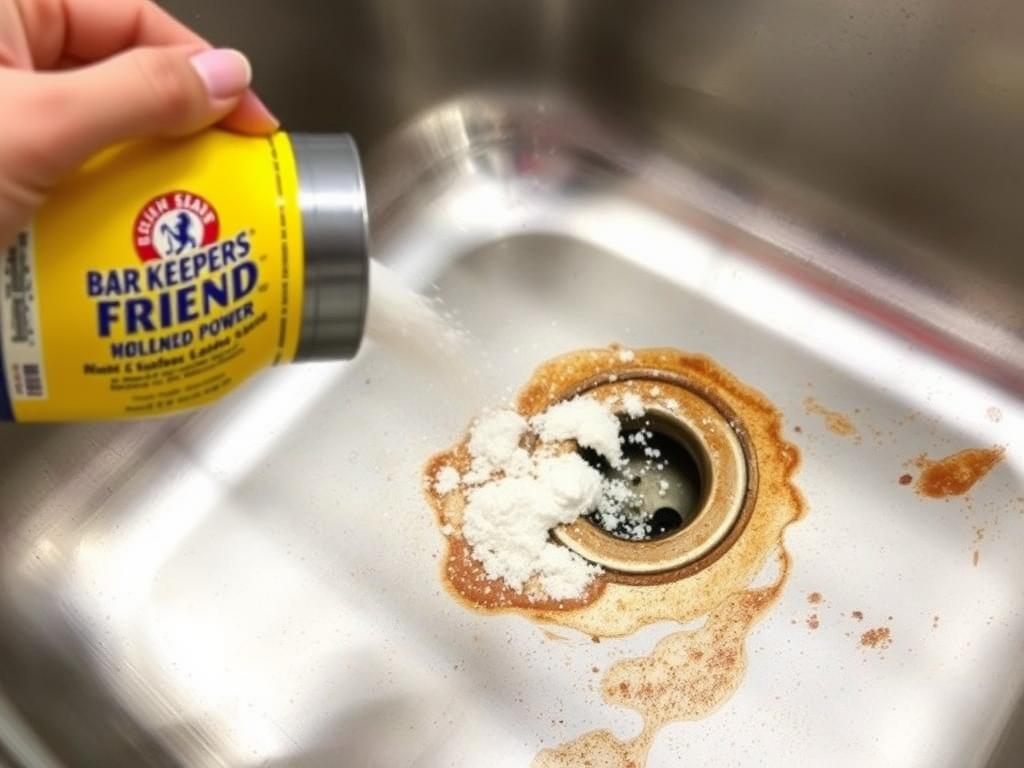
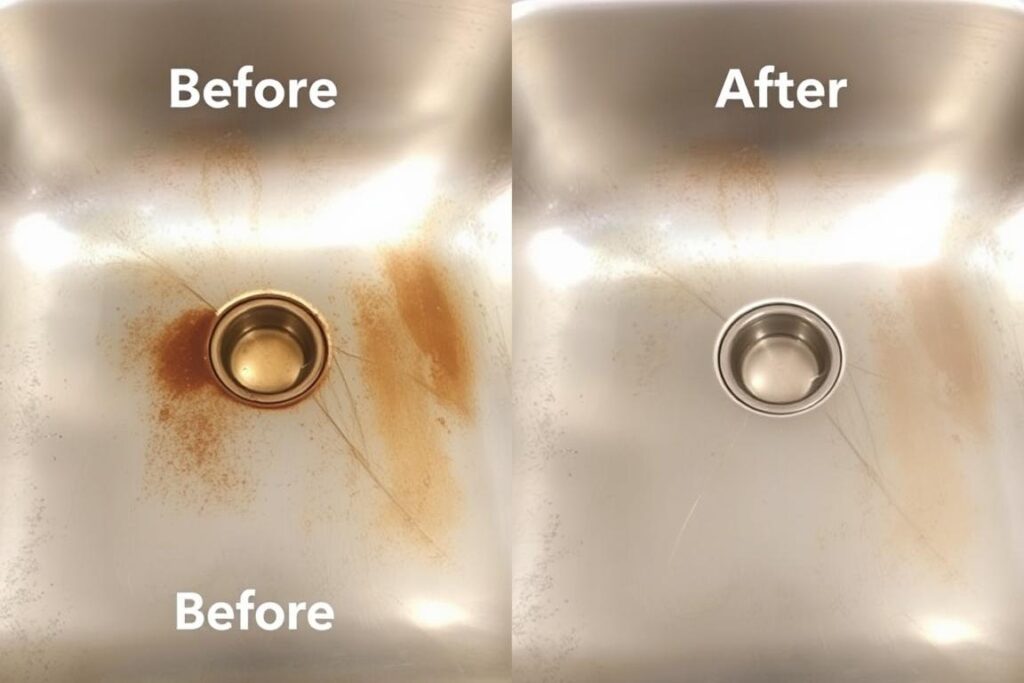
Prevention Tips: Keep Rust Away
Preventing rust is easier than removing it. Follow these tips to keep your stainless steel sink looking pristine:
- Dry your sink thoroughly after each use with a microfiber cloth
- Don’t leave cast-iron cookware or metal cans in the sink
- Avoid using steel wool or metal scrubbers
- Clean your sink regularly with mild dish soap
- Apply a light coat of mineral oil once a month to maintain the protective layer
- Consider installing a water softener if you have high iron content in your water
- Remove wet sponges or cloths from the sink when not in use
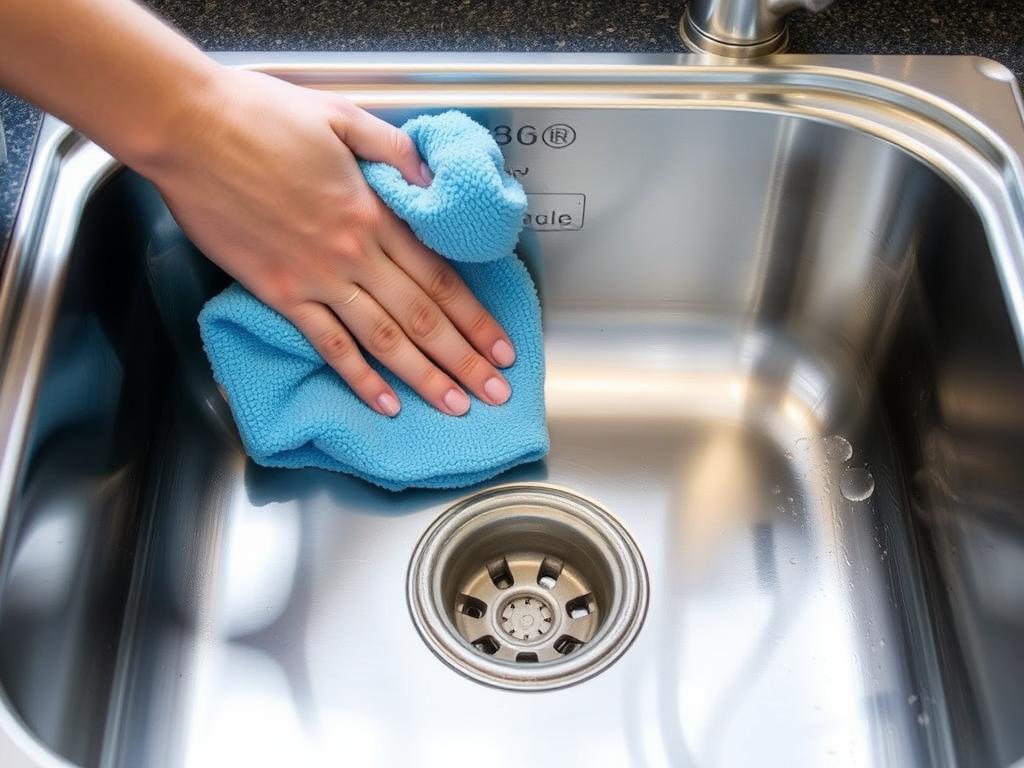
“The best way to deal with rust is to prevent it from forming in the first place. A few seconds of drying your sink after each use can save you hours of cleaning later.”
Conclusion
Removing rust from a stainless steel sink doesn’t have to be complicated. With the right approach and materials, you can restore your sink’s shine and prevent future rust formation. Remember to always clean in the direction of the grain, use non-abrasive tools, and dry your sink thoroughly after each use.
Whether you choose natural remedies like baking soda and lemon juice or opt for commercial cleaners like Bar Keepers Friend, consistent maintenance is the key to keeping your stainless steel sink looking its best for years to come.
Frequently Asked Questions
Can steel wool be used to remove rust from stainless steel?
No, steel wool should never be used on stainless steel sinks. It can scratch the surface and leave behind iron particles that will cause more rust. Always use non-abrasive sponges or cloths.
Is rust in my stainless steel sink harmful?
Rust itself isn’t harmful to your health, but it can damage your sink over time if left untreated. Additionally, rust can stain dishes and utensils that come in contact with it.
How often should I clean my stainless steel sink?
For general cleaning, wipe down your sink daily and perform a deeper clean weekly. For rust prevention, dry your sink after each use and apply a stainless steel polish monthly.
Can I use bleach to remove rust from my stainless steel sink?
No, bleach should never be used on stainless steel, as it can damage the protective chromium oxide layer and cause more corrosion. Stick to the methods outlined in this guide.
Why does my sink rust even though it’s stainless steel?
Most “rust” on stainless steel sinks isn’t actually from the sink itself but from iron residue left by other objects. True stainless steel corrosion usually only occurs if the protective layer has been damaged by harsh chemicals or abrasives.

